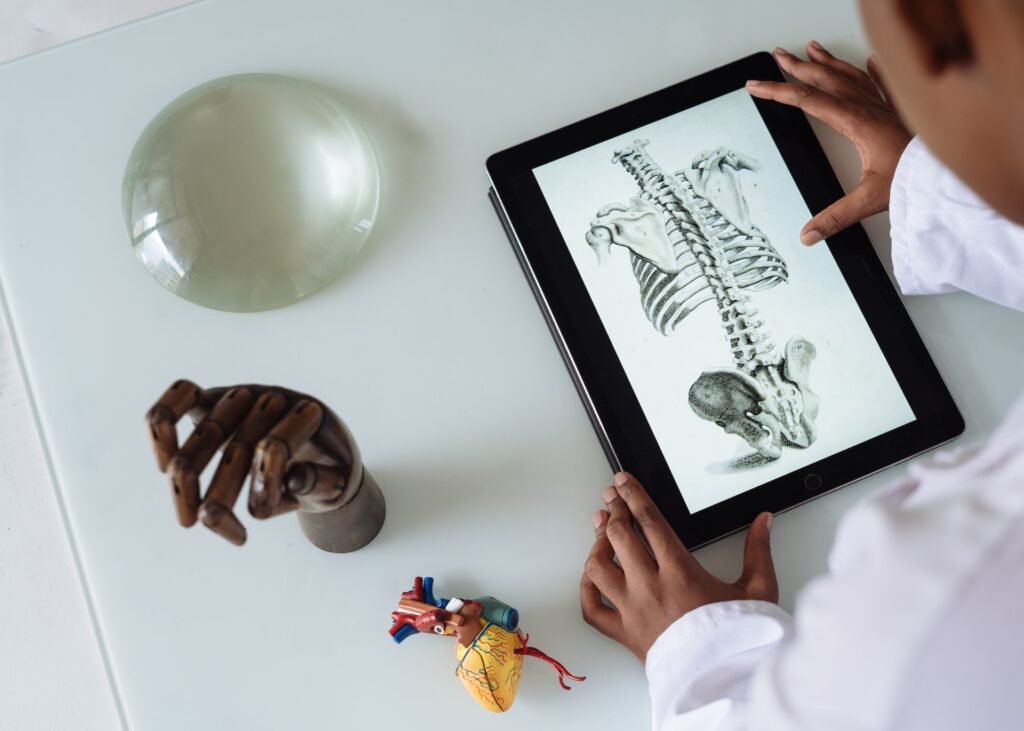Integrating Emerging Technologies and Innovation in Medical Education
The integration of emerging technologies into medical education is becoming increasingly important as the healthcare industry continues to evolve. These technologies include virtual reality, gamification, and mobile devices, which are being used to enhance the way medical students learn and prepare for their future careers. The use of these technologies allows for more interactive, engaging and personalized learning experiences, providing students with the skills and knowledge they need to succeed in the ever-changing healthcare landscape.
We have summarized ten emerging and prospective technologies/innovations in medical education here:
- Mobile Learning: Mobile learning is a way to deliver educational content and resources to students via mobile devices, such as smartphones and tablets. For example, students can use mobile apps to access quizzes, flashcards, and other resources on-the-go. Over the past decade, a shift to electronic/mobile learning is seen in resource-rich institutions and regions. This trend is expected to grow even more in the coming years with emerging mobile-based medical education initiatives by medical institutions and various commercial entities.
- Virtual Patients: Virtual patients are computer-generated patients that can be used to simulate real-world medical scenarios. They can be used to teach students how to diagnose and treat different diseases and conditions, and provide them with the opportunity to practice their clinical skills. Virtual patients can also be used to help students develop their communication and teamwork skills, by allowing them to work together to diagnose and treat patients in a simulated clinical setting.
- Virtual Learning & Gamification: Virtual learning used with gamification can enhance collaboration and engage students in teamwork and problem-solving activities. For example, students can work together to diagnose and treat virtual patients, or to develop and present research projects. Collaborative learning can help students to develop their communication and teamwork skills, and can also make learning more engaging and fun.
- Interactive Quizzes and Games: Interactive quizzes and games are another popular example of gamification in medical education. These tools can be used to test students’ knowledge of different medical concepts and procedures, and provide them with immediate feedback on their performance. They can also be used to make learning more engaging and fun, by incorporating elements of competition and achievement.
- Point Systems: Point systems are a way to reward students for completing different tasks or milestones in their education. For example, students may earn points for completing assignments, quizzes, or other activities, and can use these points to unlock new levels or rewards. Point systems can provide students with a sense of accomplishment and motivation, and help to keep them engaged in their education.
- Leaderboards: Leaderboards are a way to compare student performance and provide them with a sense of competition. For example, students can be ranked based on their performance on quizzes, assignments, or other activities, and can see how they compare to their peers. Leaderboards can also be used to motivate students to improve their performance and achieve higher scores.
- Badges and Certificates: Badges and certificates are a way to recognize student achievements and milestones. For example, students can earn badges for mastering certain skills or concepts, or for achieving a certain level of performance. Badges and certificates can provide students with a sense of accomplishment and recognition, and can be used to encourage them to continue to improve their performance.
- Personalized Feedback: Personalized feedback is a way to provide students with tailored feedback and recommendations based on their performance and learning style. For example, a learning management system can track student progress and suggest additional resources or activities to help them improve. Personalized feedback can help students to identify their strengths and weaknesses, and to develop a personalized learning plan that is tailored to their needs.
- Game-based Assessments: Game-based assessments are a way to evaluate student performance in a fun and engaging way. For example, students can be assessed on their knowledge of medical concepts and procedures through interactive games and quizzes. Game-based assessments can provide students with immediate feedback on their performance and help them to identify areas where they need to improve.
- Virtual Reality (VR) Simulations: VR simulations are one of the most popular examples of gamification in medical education. These simulations use VR technology to create highly realistic and immersive environments, where students can practice different medical procedures and scenarios, such as surgeries, emergency care, and patient interactions. This allows students to gain hands-on experience in a safe and controlled environment, and helps to prepare them for real-world situations.
As the healthcare industry continues to advance, the integration of emerging technologies into medical education will become even more critical to ensure that the next generation of healthcare professionals are well-equipped to meet the needs of patients.

